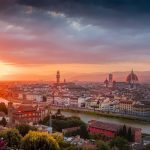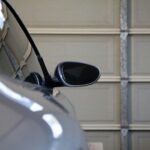Ever plan a vacation that was supposed to be relaxing but turned into a chaotic mix of forgotten items, last-minute bookings, and snack-related meltdowns? It happens more often than we admit. And when the destination is as packed with things to do as Pigeon Forge, going in without a plan can leave you overwhelmed instead of unwinding. In this blog, we will share how to prepare for a trip to Pigeon Forge that actually feels like a vacation.
The Season You Pick Changes Everything
Most people don’t realize how much timing shapes their experience. Pigeon Forge isn’t just a summer destination. It morphs with each season—sometimes subtly, other times with full-blown fanfare. Spring rolls in with warm breezes, wildflowers, and smaller crowds. Fall brings crisp air and mountain colors that pull you off your phone whether you want to unplug or not. Winter adds a glow, literally, thanks to millions of holiday lights across town.
But for a lot of travelers, spring is where things start to click. It’s not just about the weather or cheaper rates—though those help. It’s also the season when local energy begins to build again. Take Dollywood for instance. As the gates swing open in March, the mood shifts. Performers, artists, and musicians roll in, and the streets come alive. The kickoff event, the I Will Always Love You Music Festival, draws crowds with music, performances, and a celebration of songwriting. It isn’t just a nostalgia trip. It’s an immersive, cross-genre experience that hits every corner of the park.
And once that’s wrapped? The Flower & Food Festival blooms in its place. Think sculptures made of flowers, international food stalls that don’t hold back on flavor, and photo ops under floating umbrellas. These aren’t side attractions. They shape the entire experience. It’s one of the reasons people time their visits around Dollywood festivals—because they’re more than just events. They’re the backdrop to the memories you end up keeping.
Booking Early Is Less About Savings and More About Sanity
Some people love the rush of booking last minute. They’ll brag about how they grabbed a cabin the night before their flight or landed a half-price deal with a coupon they found in a Reddit thread. But that only works if you’re fine with chaos and risk. Pigeon Forge may look sleepy from the outside, but it sees nearly ten million visitors a year. That’s a lot of elbows at breakfast buffets and sold-out trolley rides if you’re not careful.
Booking your accommodations early lets you avoid getting stuck in a place that’s either too far from everything or has paper-thin walls that make you rethink traveling altogether. Look for cabins, rentals, or even family-friendly hotels that put you near the action but still give you enough quiet when the day winds down.
And don’t just stop at lodging. Reserve show tickets, dinner experiences, and park passes ahead of time. Waiting until you get there often means settling for less. Attractions like The Island, scenic helicopter tours, and escape rooms fill up fast, especially during weekends and school breaks. Think of it this way: would you rather spend fifteen minutes clicking through websites now or spend two hours in a walk-up line with a cranky crowd later?
Packing for the Mountains Means Layers and Low Expectations
The Smoky Mountains don’t care what the weather app told you. It may say sunny and 72, but by the time you ride the elevator down from your room, there’s fog, rain, and wind that wasn’t in anyone’s forecast. Then two hours later, it’s hot again. That’s how the mountains work. They change without notice and don’t feel bad about it. So pack like you’re preparing for three seasons in one weekend.
That doesn’t mean stuffing five jackets and three pairs of shoes in your suitcase. Just bring smart layers. Think light hoodies, rain-resistant windbreakers, and shoes that can handle both pavement and gravel. Don’t forget a decent pair of sunglasses either, because the sun hits different at elevation. And maybe a pair of binoculars if you’re into wildlife watching—though honestly, half the time the deer will walk right past you on the sidewalk like they own the place.
It’s also worth throwing in a small backpack or sling bag for day trips. Something light but roomy enough to hold water bottles, snacks, extra socks, and anything you decide to buy on impulse. And don’t pretend that won’t happen. Between the fudge shops and moonshine tastings, it absolutely will.
Don’t Skip the Free and Quiet Stuff
There’s a temptation when you’re on vacation to only chase the big-ticket experiences. Theme parks, thrill rides, interactive theaters—all of them are loud and fast and expensive. But some of the best moments in Pigeon Forge aren’t priced by the hour. They’re slow, scenic, and usually just a short drive from the busy streets.
Walks along the Little Pigeon River, early morning drives through the Smokies, or just sitting on a cabin porch with a cup of something warm—they don’t sell these moments on brochures, but they’re the ones that tend to stay with you. Especially when life speeds back up after the trip ends.
The town is loud in parts, sure. But it’s also peaceful in ways you might not expect. If you give yourself even one or two chances to step outside the usual attractions and let the pace drop, the vacation feels more complete.
Pigeon Forge isn’t just another tourist town. It’s a place that gives you options—to move fast, to slow down, to experience things you didn’t plan for and probably couldn’t have predicted. But it only works when you give it structure without strangling the spontaneity out of it. That’s what makes it feel like a real break, not just a location on your itinerary. And if you prep the right way, you won’t just visit—you’ll actually experience it.














